| © Copyright Robert
Cole 2015 - No
copying or distributing BIZEN |
|
Lay-out Version |
__________________ KO-BIZEN CHIKATADA KEN-PO 1213 |___________________ ___________________ _______________ __|______ __|_____ ___|____ ___|____ MITSUTADA KAGEHIDE(1) YASUTADA KAGEYASU | BUN-RYAKU 1234 | SHO-GEN 1259 RYAKU-NIN 1238 JO-EI 1232 | ______________|___________________________ _______ | ___|______ __|_____ ___|____ | | SHIGEYOSHI(1) KAGEHIDE(2) KEN-GEN 1302 KAGEYORI | | KA-GEN 1303 |____________ SHO-O 1288 | | See KOZORI __|_____ ___|____ ____________|___ | SANEFUSA SHIGEIYE FUKUOKA KAGENORI(1) | GEN-O 1319 KEM-MU 1334 _____________|___ | See KOZORI YOSHIOKA KAGENORI(2) | YOSHII School Founders | See YOSHII |________________ ____________ ________________________ ___________________ __|______ -br- ____|____ ___|____ ___|____ | NAGAMITSU MITSUKAGE SANENAGA BUN-EI 1264 KAGEYASU SHO-O 1288 | SHO-O 1288 EI-NIN 1299 See NAGAMITSU School ___|____ | See Following YASUYUKI KA-REKI 1326 | ______________________ ______________________________| ___|____ ___|______ SUYENORI KA-TEI 1235 MITSUCHIKA SHO-O 1288 |___________ ___|_____ ___|______ ___|____ MOTOMITSU KA-REKI 1326 MITSUCHIKA HISAMUNE - BUN-EI 1264 - SUYENORI KA-TEI (t: MITSUTADA, f: YASUNORI): From TEI-O 1222, his line falls from FUKUOKA NORIMUNE. ITAME HADA. CHOJI BA. |
MITSUTADA
RYAKU-NIN (f: CHIKATADA, br: KAGEYASU): OSAFUNE
Founder.
BIZEN KO-OSAFUNE MITSUTADA
|
Mitsutada - 71.2cm 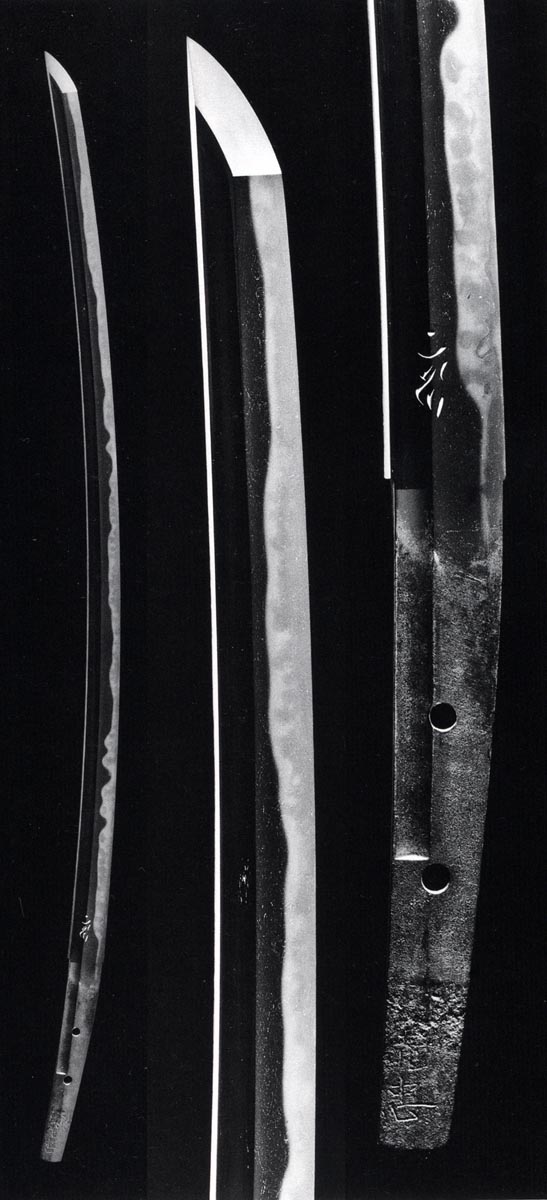 |
BUNKAZAI MITSUTADA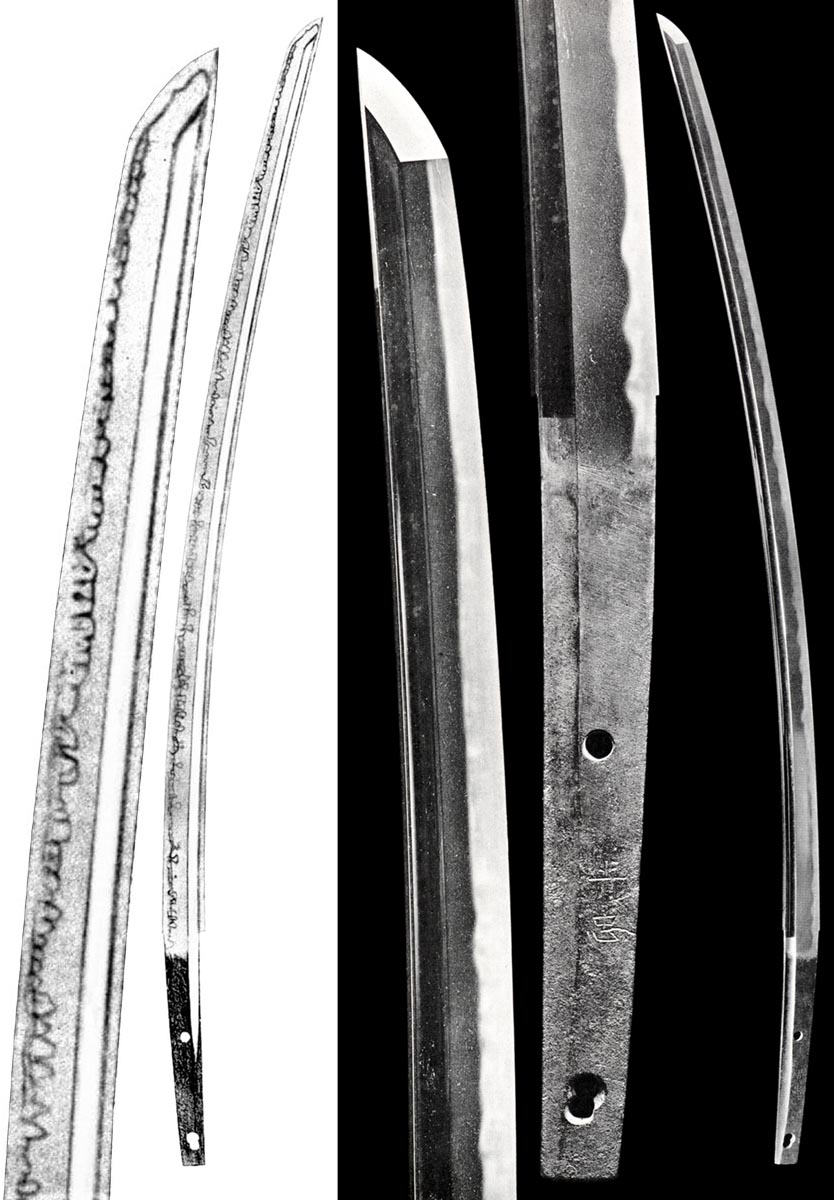 BUNKAZAI MITSUTADA
SHINOGI-TSUKURI,
IHORI-MUNE, KOSHIZORI TACHI. Swirling MOKUME with JI-NIE. OSAFUNE MONOUCHI: A smooth BOSHI finds CHU-width, evenly set, squarish CHOJI beginning from the YOKOTE. Each nodule resets the slight ASAKI-NOTARE undulation of its neighbor. Looping YO-painted CHOJI crest a wave-like swell through the upper which breaks-up and falls in ever-changing combinations. Square, oblong and pointed OBUSA GUNOME jut through jostling KO-CHOJI where delicate KO-ASHI trace detail. Far and near KAWAZU rise in the mid, tending their KAWAZUKO garden. KINSUJI and SUNAGASHI combine in long undercurrents. Round TOBI-YAKI stand on pinnacles to dot the lower while UTSURI rises from the HABUCHI. OMOTE lower is quieter than URA, its faraway figures stand placidly. KIRI-JIRI SURIAGE NAKAGO
has two MEKUGI-ANA, the lower with multiple bores.
His small MEI rests in the JI, solidly above the
lower ANA: |
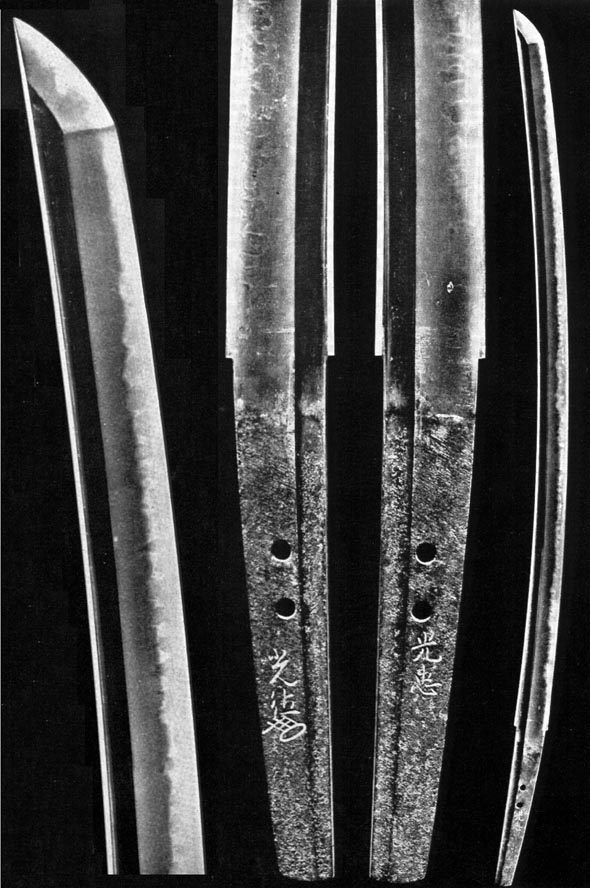 KINZOGAN-MEI MITSUTADA - HONAMI KOTOKU (CAO) ODA Collection NAGASA: 72.6cm IKUBI-KISSAKI on O-SURIAGE KAMAKURA SUGATA TACHI.ITAME HADA with NIOI-DEKI CHOJI-MIDARE BA. Osafune Monouchi. |
Mitsutada
Tachi - Kokuho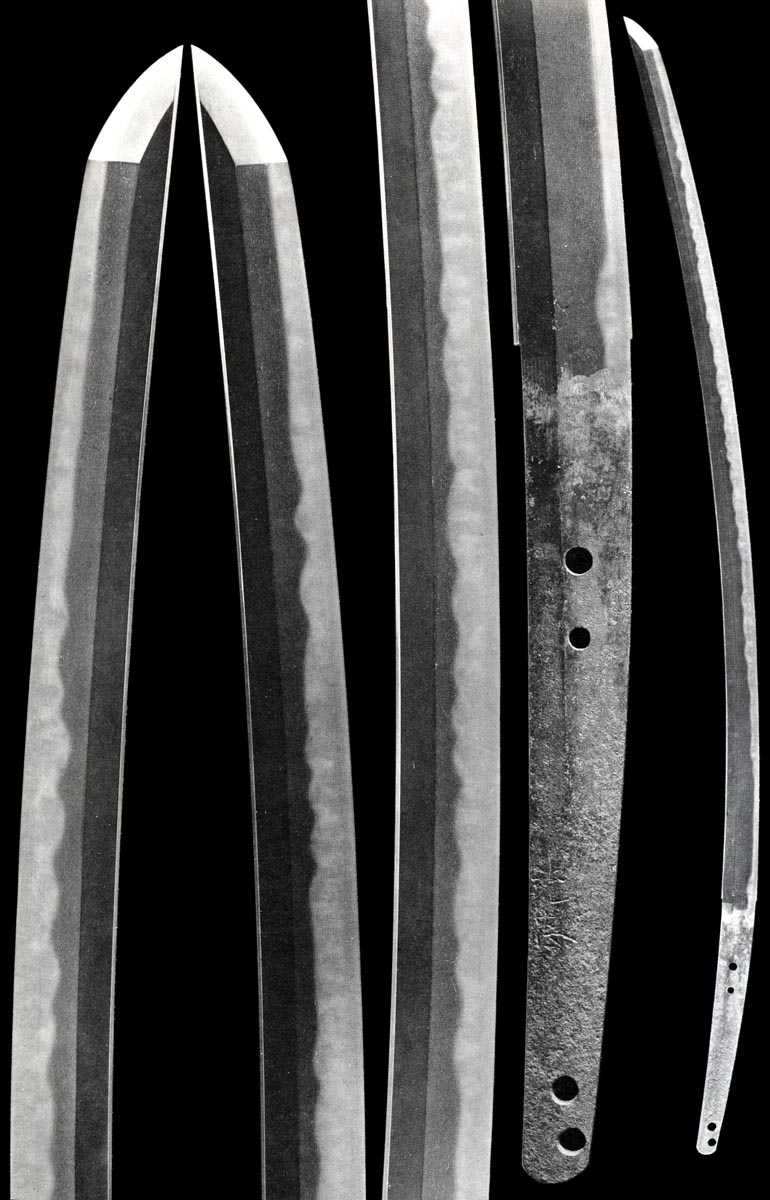 Mitsutada Tachi - Kokuho Nagasa: 68.9cm Moto-haba: 2.7cm Shinogi-Tsukuri, Ihori-Mune, deeply curved Koshizori with Chu-Kissaki. Ko-Itame Hada has Ji-Nie. Nioi-Fukashi Obusa Choji Midare Ba has long-fall Ashi-naga. Omote Boshi is Maru, Togari on Ura. Suriage Kurijiri Nakago has four Mekugi-ana. Signed on the Ji. Mitsutada |
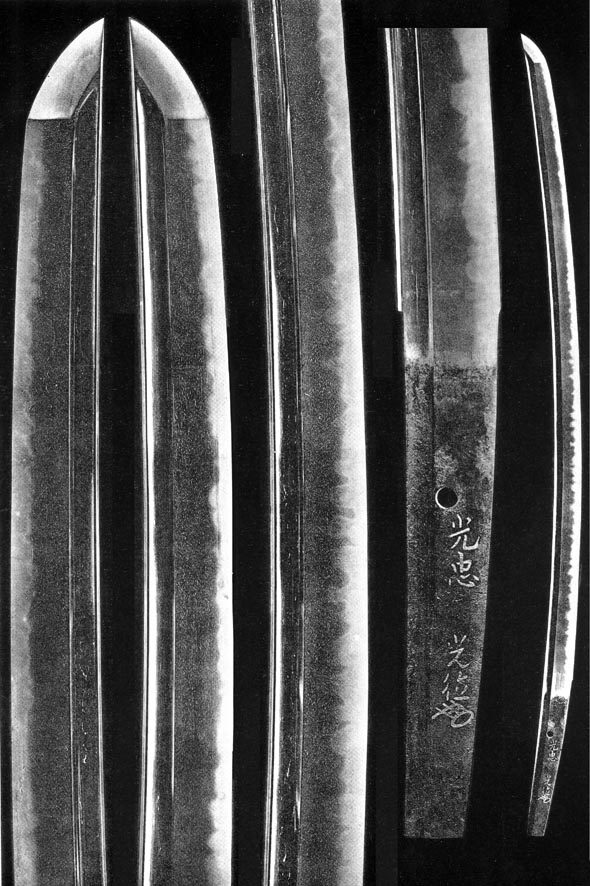 KOKUHO MITSUTADA KINZOGAN-MEI MITSUTADA - HONAMI KOTOKU (CAO) ODA Collection NAGASA: 68.5cm SHINOGI-TSUKURI,IHORI-MUNE with wide MIHABA and
thick KASANE. The A serene blue KO-ITAME has JI-NIE with standing MIDARE-UTSURI. Jumbling KAWASU O-CHOJI-MIDARE unfolds through the lower and recedes to GUNOME in the upper - placing his typical trademark OSAFUNE MONOUCHI. The rise and fall of NIOI-FUKAI figures appear white. There are KINSUJI, ASHI and YO. MIDARE-KOMI BOSHI is nearly YAKIZUME. NIE tends to HAKIKAKE. O-SURIAGE NAKAGO has one MEKUGI-ANA and
KINZOGAN-MEI: |
KAGEYASU JO-EI (br: MITSUTADA): Work to KO-AN 1278. This 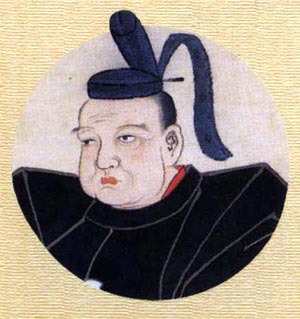 Date Masamune |
|
|